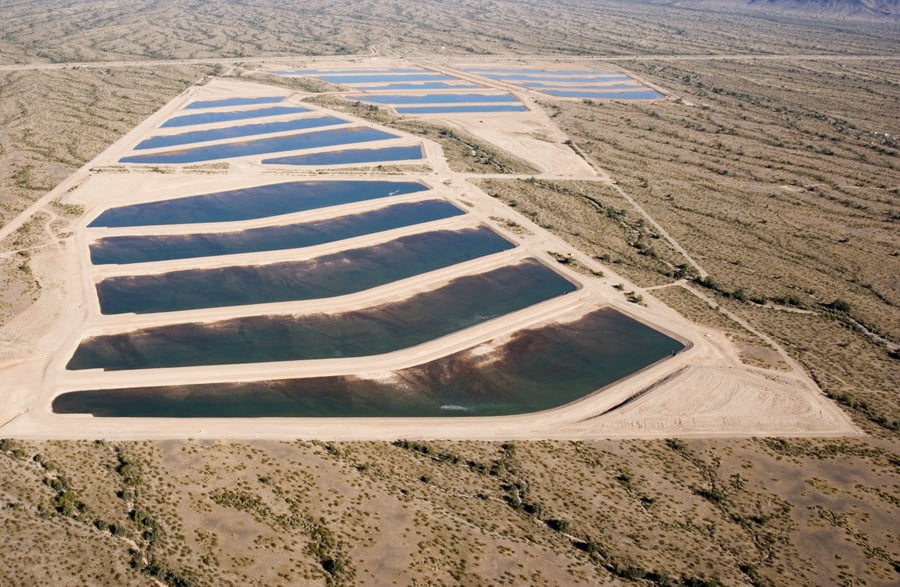A California court recently ruled that some municipal water rates — those featuring aggressive increasing block rates, or IBRs — violate the state’s constitution. The ruling triggered an outcry from water managers and elected officials who claim that IBRs are necessary to punish water waste, reward conservation, and cope with drought-induced shortfalls in supply. While it has no impact outside California, the ruling has sparked discussion elsewhere in the Southwest.
Economic theory vs. reality for IBRs
IBRs are based on the theory that those who use more water are likely being wasteful and therefore should pay more per gallon than lower-usage customers. Because the commodity charge increases with the volume of water used, alleged wasters end up with a strong incentive to curtail their usage.
But IBRs are effective only if customers are aware of the marginal price they face for water. That requires knowing the details of the rate structure, the date of your last meter reading, and the amount of water you and other household members have used since then. Research by Woodard and others some 30 years ago [1,2] strongly suggested that most consumers only know the cost of their last water bill and (roughly) the amount of water they used. In other words, they are aware of average — not marginal — price. And the average price of water declines with increased usage for many consumers facing IBRs because of the fixed components of their water bill.[3]
IBRs raise other issues
IBRs are not only ineffective, they are inequitable; and, as the California court stressed in its ruling, they don’t align with costs of service, either.
IBRs are inequitable because they assume that those who use more water are being wasteful. But consider this example — two households with one person each merge to form a two-person household. Research suggests that this new household’s indoor water use will be a bit less than the sum of the indoor water uses of the two smaller households. And outdoor water use does not increase with larger household sizes. Therefore, the merged household will be more water-efficient, using fewer gallons per person per day. Under an IBR pricing structure, this new, more water-efficient household will face a higher marginal cost and likely pay more per gallon.
Not only do IBRs punish larger households, but they also impact lower-income families with older, less efficient appliances and fixtures and more leaks. In contrast, IBRs are a boon to upper-middle class families buying new homes with their highly water-efficient appliances and fixtures. Thus, IBRs often penalize low-income households as well as larger families.
IBRs are also not aligned with cost-of-service principles, which is why the California court ruled that one community’s rates were unconstitutional. In general, higher-volume customers with relatively flat seasonal demand are the least expensive to serve. Such a customer might be a large, low-income family with no pool and minimal irrigated landscaping. Conversely, those with highly seasonal demand — for example, a one-person household with a pool and large lawn — are most expensive to serve. These customers help determine peak demand, which drives the water system capacity, even though much of this capacity is rarely used. Peak demand also drives treatment plant costs and, along with fire demand, distribution system costs. But IBRs don’t account for the seasonality of demand.
Yet another shortcoming of IBRs has become more apparent in recent years. Across the Southwest, most municipal water providers have experienced declining per-household water demand and associated reductions in revenue. IBRs exacerbate this problem, as declining demand results in more households falling into the lower-tier rates.
Are there better alternatives to IBRs?
Defenders of IBRs often compare them to flat-rate structures, which provide little incentive to conserve. Yet other, better alternatives exist. For example, a surcharge on summer-winter demand differentials can be more effective and fairer, since it increases rates for those with large lawns, pools, and other outdoor uses. Summer-winter surcharges also align much better with cost-of-service principles because they charge the most for water uses that drive peak demand.
Over the last 20 years, most municipal water providers have adopted some form of IBR, in large part because of their alleged conservation benefits. Since those benefits are suspect, and given the other shortcomings of IBRs, it may be time to consider alternatives.
[1] Woodard, G.C., and Charney, A.H., 1984, “A proposed modification of Opaluch’s test of consumer price behavior: Comment,” Land Economics
[2] Woodard, G.C., 1984, “Designing water rate structures to promote conservation,” Hydrology and Water Resources in Arizona and the Southwest, v.14
[3] These findings were recently confirmed by the work of other economists as reported in “Do Consumers Respond to Marginal or Average Price? Evidence from Nonlinear Electricity Pricing,” American Economic Review, 104(2): 537-63, 2014.










